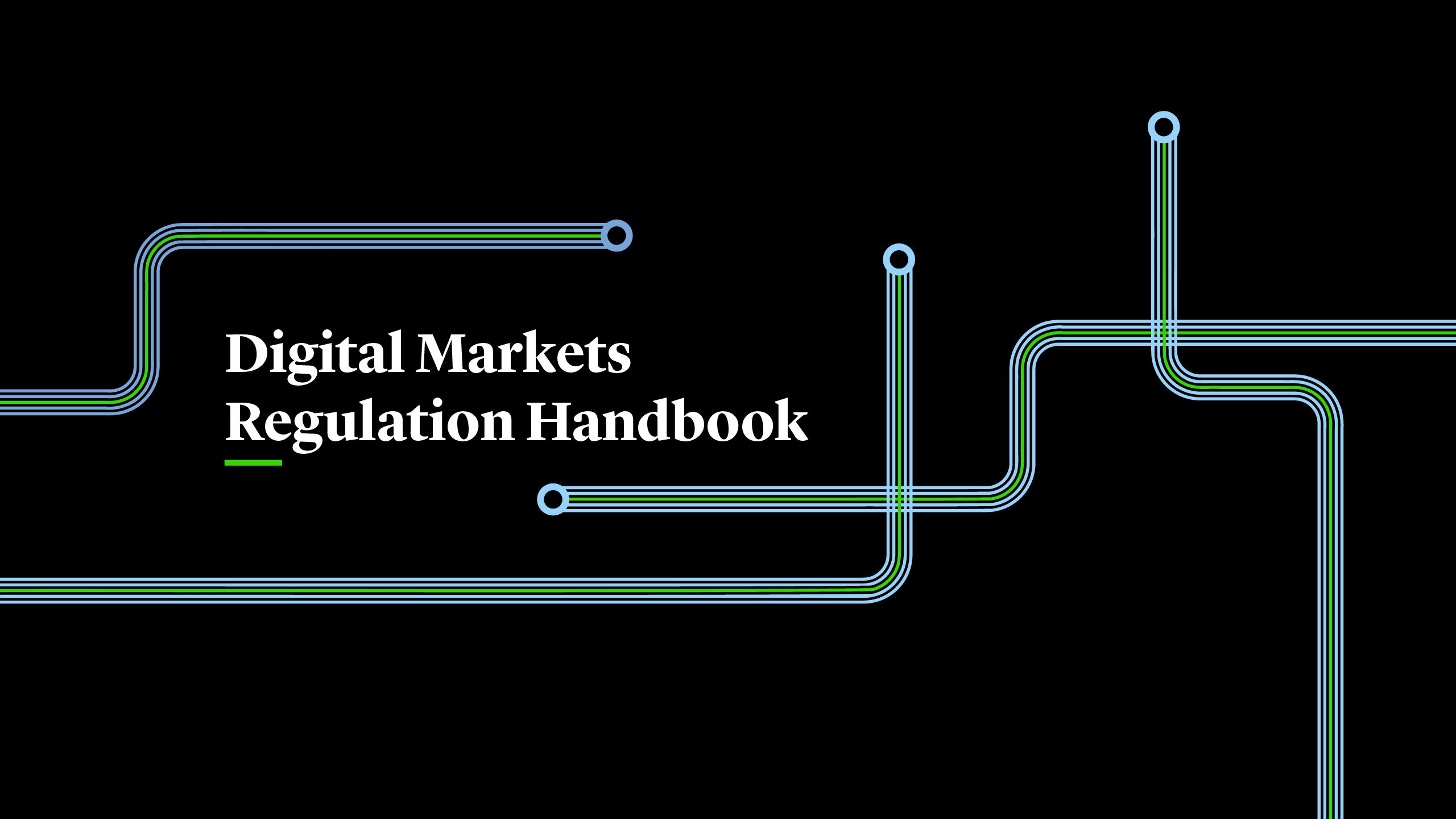

Proposals for regulation designed to address competition issues in digital markets have started to proliferate as policymakers have, in recent years, moved from deliberation to action.
With rolling waves of overlapping rules to navigate, businesses and practitioners may rightly feel overwhelmed. Written by global experts, this guide navigates uncharted waters to bring clarity to a brave new world of competition regulation in digital markets.



From the complex network of new regimes and rules, we identify three trends.

First, many substantive rules mimic past or pending antitrust cases. The drive for ex ante regulation stems from a consensus that traditional competition law rules are too slow, and the burden of proof on authorities too high, to protect and enhance competition in digital markets. Accordingly, some forthcoming rules prohibit certain conduct up front across firms and across product and service categories, with limited scope to look at effects on competition or for firms to justify conduct based on economic efficiencies. They obviate the need for targeted antitrust enforcement against specific firms and practices.
For example, rules on interoperability for operating systems reflect the European workgroup server case against Microsoft. Rules on self-preferencing in ranking and preinstallation of apps on smartphones are inspired by previous cases against Google. Rules concerning app stores’ mandated use of billing systems stem from investigations into Apple. And rules on the use of business user data to compete with those business users mirror investigations into Amazon and Meta. In addition, most regimes import broader principles from competition law, such as the notion of anticompetitive effects, the boundaries between integrated and separate products, and the concepts of fairness, reasonableness, and non-discrimination.
At the same time, competition law will remain relevant even as ex ante regulatory regimes come into being. Regimes like the European Digital Markets Act (“DMA”) and South Korea’s app store rules are sufficiently specific to leave space for antitrust to tackle conduct—and firms—beyond their scope. As EU Competition Commissioner Margrethe Vestager has said, antitrust and regulation “are complementary – both will remain necessary.1

Second, the relevance of anticompetitive effects or consumer benefits when assessing firms’ practices varies across regimes. Under the DMA, for example, there is no express requirement for the European Commission to establish that a breach of the rules adversely affects competition before finding a violation. Presuming anticompetitive harm in this way is driven by a view that certain forms of conduct that were traditionally considered competitively beneficial, or at least neutral, risk damaging competition when undertaken by large digital platforms.
The dispensation of effects analyses in certain forthcoming regimes may also result from the lodestar of competition law—the protection of competition and consumers—giving ground to a different goal: the preservation of pluralistic market structures. This goal, inspired by US Supreme Court Justice Louis Brandeis and the ordoliberal origins of EU competition policy, has the consequence of disregarding welfare gains that flow from successful competition that generates both competitive advantages for innovators and benefits for consumers. It abandons the fundamental tenet of competition law that tolerates—even lauds—the exclusion of less efficient firms.
This approach is not, however, universal. The proposed UK regulatory regime for digital markets, for example, will be based on evidence of harm to competition and will take consumer benefits into account. Proposed bills in the US require proof of harm to competition as a precondition of a violation. And the German section19A amendments already in force allow firms to justify their conduct based on consumer benefits. Even under the DMA, gatekeepers should be able to rely on the general principle of proportionality under EU law to limit harmful intervention. A more flexible approach is welcome. Ignoring procompetitive benefits can deprive consumers of the fruits of innovation, whereas protecting less efficient rivals from exclusion can remove the incentive for firms to innovate altogether.

Third, authorities should engage in regulatory dialogue with target firms and other stakeholders in order to produce compliance solutions that balance the interests of end users, business users, and platforms. Such engagement is expressly contemplated under the DMA. Regulators appear also to envisage involving stakeholders in a form of participatory regulation. Margrethe Vestager has stated that DMA compliance solutions will be subject to dedicated “technical workshops” with consumers, who could help determine whether a remedy “could actually work” or “[live] up to what is in the law.”2
The UK Competition & Markets Authority (“CMA”) will, under the UK’s proposed regulatory regime, have the power to test and experiment with compliance measures.
Authorities seem particularly interested in interventions that could result in digital firms changing the designs of their digital products in order to promote greater user choice. For example, recent investigations3 and research4 by the CMA demonstrate its appetite for engaging with firms’ designs—from the positioning of buttons to the color of text—as it mulls potential regulatory rules. The European Commission also has experience in scrutinizing the minutiae of user interface design through previous cases where it negotiated choice screens on the Windows and Android platforms and the design of Google’s search page. Participation from industry will introduce an additional dimension to designing, testing, and iterating workable compliance solutions in this area.
Editors
Thomas Graf
Partner
Jackie Holland
Partner
Henry Mostyn
Partner
Patrick Todd
International Lawyer













